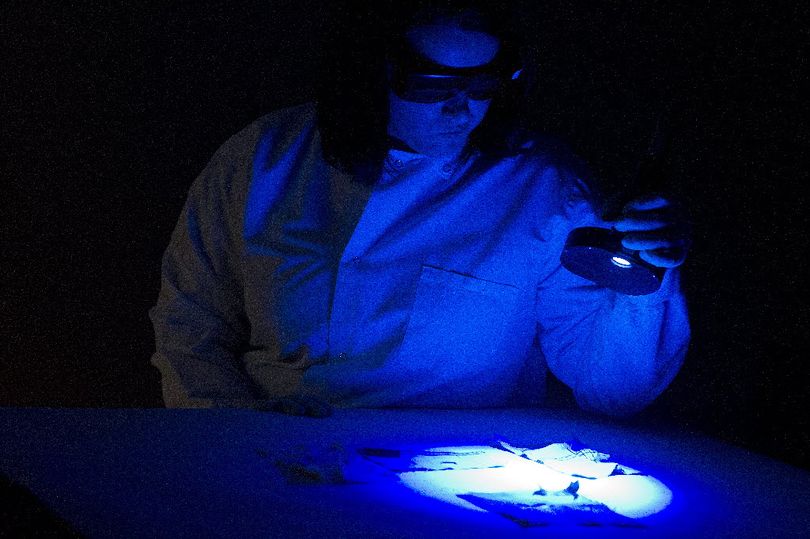State patrol: DNA solving more crimes

DNA testing in Washington is identifying more criminals than ever before.
The Washington State Patrol crime lab reported 379 hits last year using a DNA index system and DNA samples from crime suspects and convicted felons. In 2009, 257 hits were recorded.
Officials attribute the increase to a new program that tests evidence from property crimes, as well as technological improvement. Investigators have gleaned more than 1,500 leads from DNA since the state implemented the system more than 10 years ago, according to a WSP news release. (Forensic scientist Anna Wilson is pictured above examining DNA evidence.)
The ne ws release cited a Spokane grocery store robber arrested after DNA he submitted for a drug conviction was matched to DNA found on a fake wig he wore during the June 2009 crime (pictured).
ws release cited a Spokane grocery store robber arrested after DNA he submitted for a drug conviction was matched to DNA found on a fake wig he wore during the June 2009 crime (pictured).
Donald R. Wright pleaded guilty to second-degree robbery last May.
Other perhaps more notable examples include the recent arrest of Gary Trimble, who's accused of murdering Dorothy Burdette in 1986.
DNA obtained after a 2007 conviction in Montana matched DNA found on the Burdette's bra and on a blanket in which her body was wrapped. Trimble was extradited from Montana in January.
And just last month, 23-year-old Louis Kuster of Spokane was arrested for a year-old rape after DNA submitted for a property crime conviction matched DNA left on the victim.
“This is about arresting and convicting the guilty, and clearing the innocent,” WSP Chief John R. Batiste said in a prepared statement. “DNA is the most reliable way we’ve ever had for telling if someone was present at a crime scene.”
The DNA lab, located in Seattle, receives about 1,400 samples from convicted felons each month. The database contains more than 194,000 DNA profiles.
Samples are regularly compared to DNA evidence from more than 3,500 crimes statewide and to the national DNA database.
More than half of last year's hits were linked for burglaries, and about 39 percent were for violent crimes such as murder, rape, robbery or assault.
Nearly 80 percent of the 379 hits were from people convicted of non-violent crimes like burglary or drug possession, which WSP says "shows the value of capturing DNA from those convicted of less severe, mostly non-violent crimes."